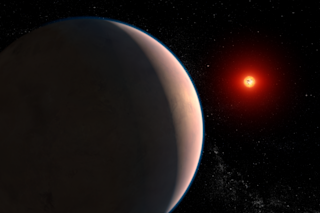Scientists using the James Webb Space Telescope (JWST) may have uncovered one of the Holy Grails of astronomy and astrophysics: the discovery of a rocky exoplanet with an exotic, water-rich atmosphere.
Then again, it might all be an illusion.
JWST was designed, in part, to hunt for such planets, and GJ 486 b would be the first identified. The problem is, the planet closely hugs its parent star, a red dwarf, and lies well outside the habitable zone. Temperatures on the planet, which is larger than Earth, reach a scorching 800 degrees Fahrenheit – too hot to support life as we know it.
“It’s in no way habitable,” said Sarah Moran, a planetary scientist at the University of Arizona in Tucson, in a press release.
Read More: How the James Webb Space Telescope Takes Such Stunning Pictures
JWST detected the planet’s atmosphere, or at least evidence of one, by zeroing ...














